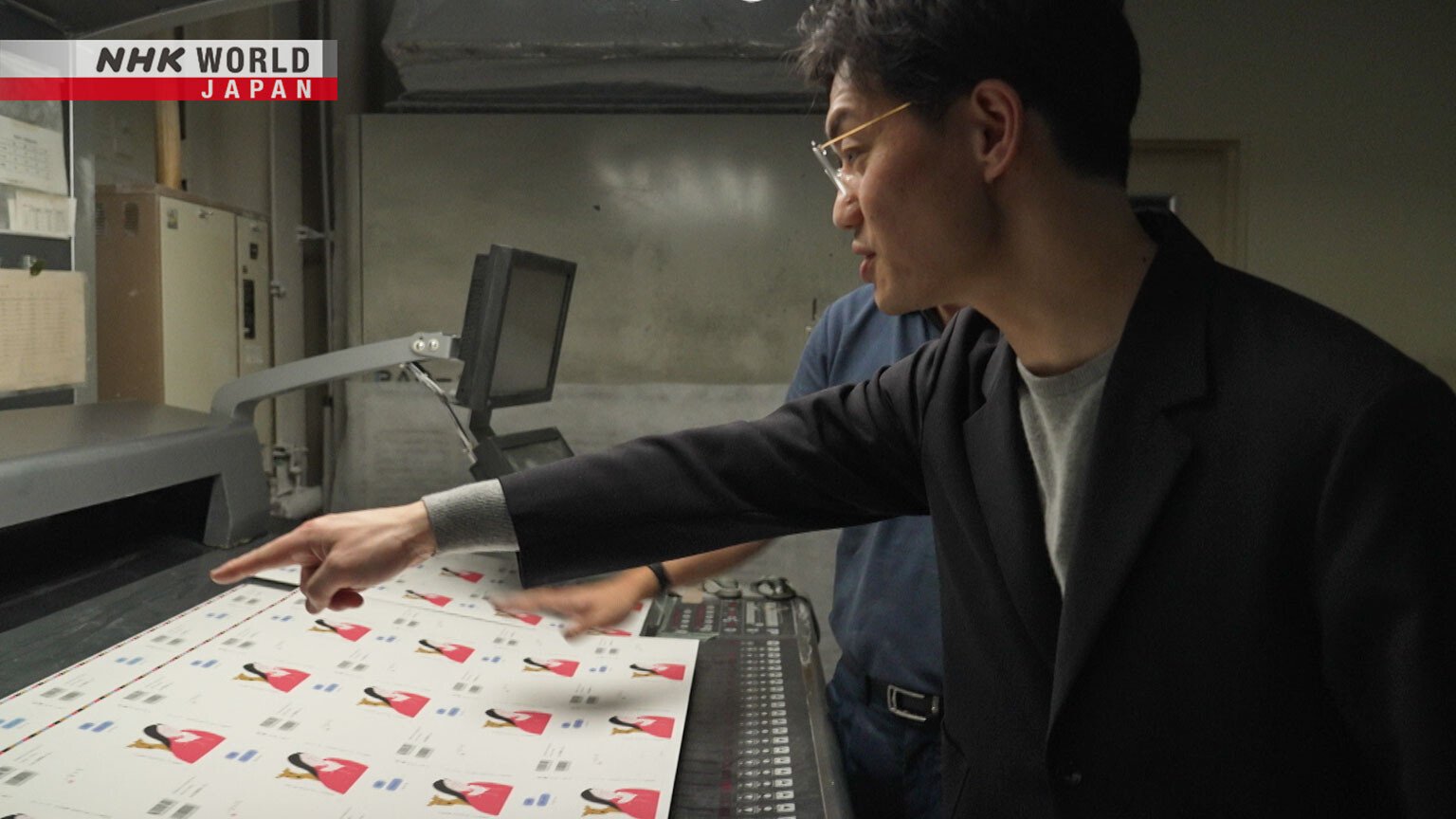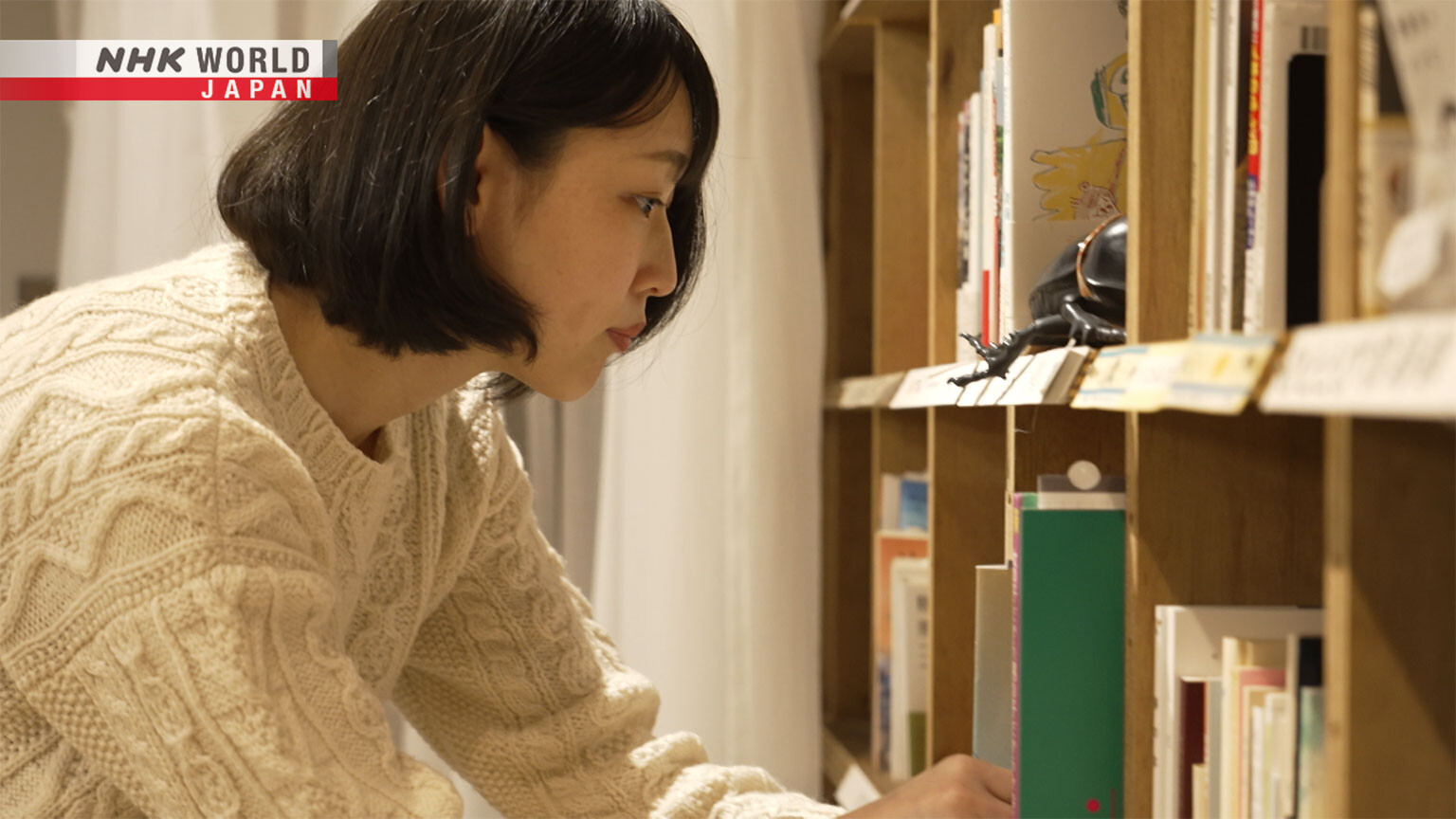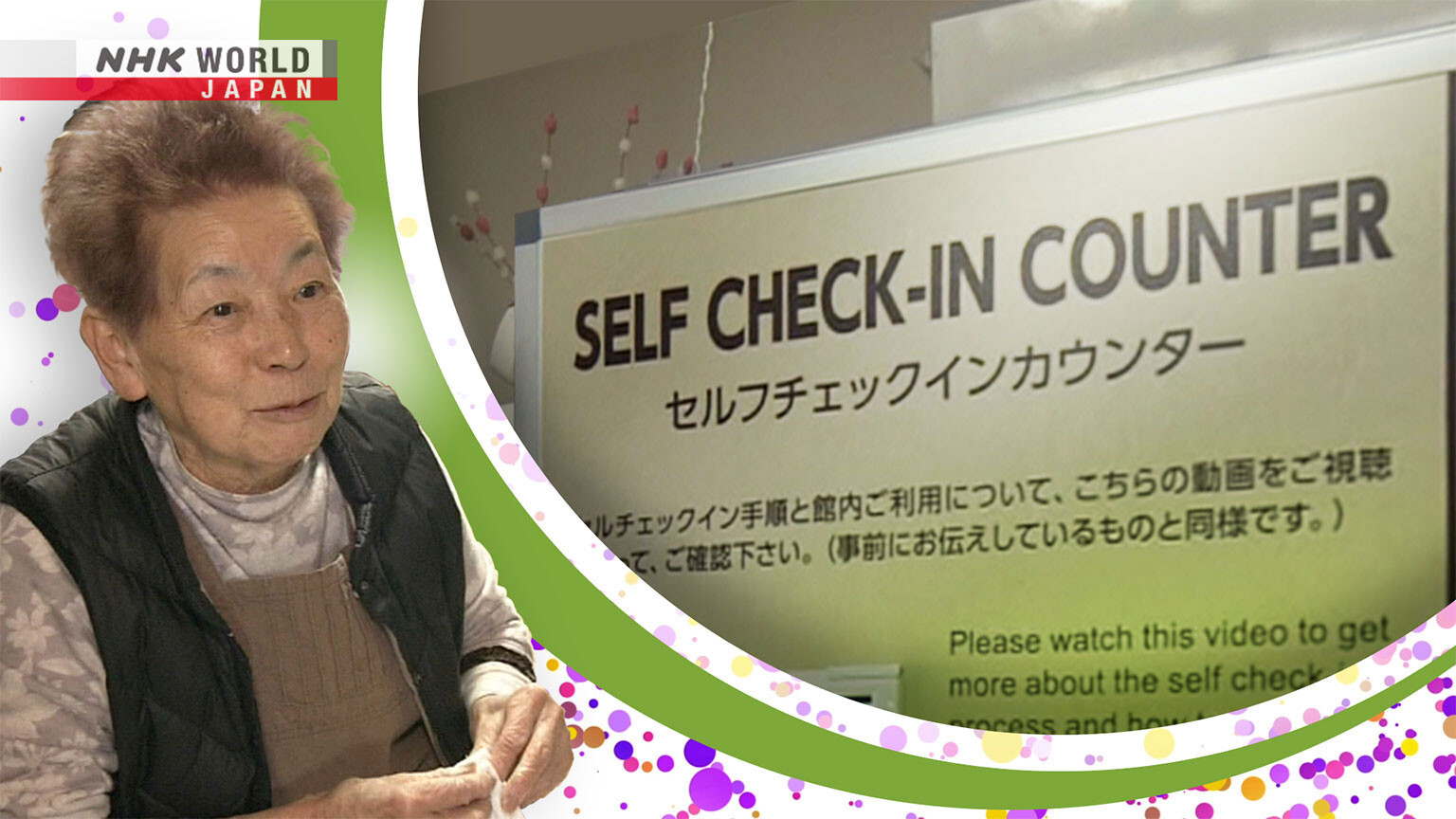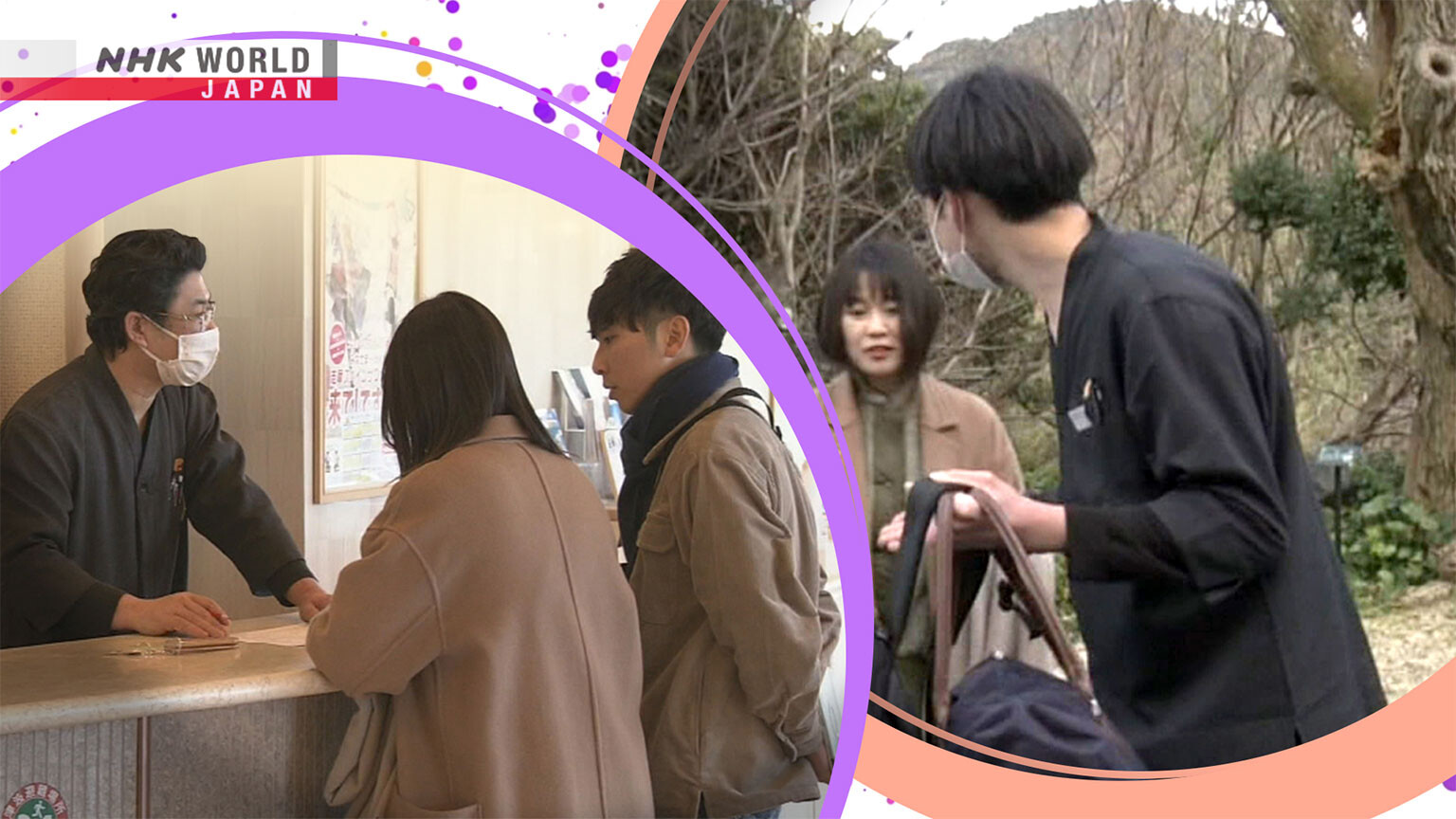Taking Pride in Printed Books
[On-Site Report: Taking Pride in Printed Books]
In the age of digitalization, this episode focuses on businesses that are based around producing and selling physical books.
*Subtitles and transcripts are available for video segments when viewed on our website.
On-Site Report: Taking Pride in Printed Books


Global Trends: Creative Ways to Save Labor in the Tourism Sector
Overseas tourism to Japan has come rushing back, causing a shortage of workers in the industry. Some businesses have come up with ingenious solutions to remedy this. We look at creative ways to handle more people with fewer staff.


In Focus: Japan Rate Decision Rings Warning Bell for Companies
Japan is finally shifting its monetary policy, becoming the last major economy to end negative interest rates. We look at what that means for unprofitable companies accustomed to a life with ultra-low borrowing costs.
Transcript
This Tokyo company produces metal parts for cars and semiconductor machinery.
It boosted capital spending to become more competitive with rivals.
The firm took out bank loans to purchase new production equipment
and had plans to expand its borrowing.
But that strategy is now in doubt after the Bank of Japan raised rates.
It's possible we might have to hold back some capital investment if borrowing rates move higher.
The BOJ's shift away from negative interest rates is a significant policy development.
But at the same time, the BOJ governor says a near-term surge in lending rates is unlikely.
Based on the current forecast for prices and the economy,
we believe that an easing financial environment will continue for the time being.
But market analysts are factoring in further tightening this year.
That raises questions about how some businesses would be able to finance operations.
Research house Teikoku Databank says a 1 percentage point increase in the lending rate
could push 7 percent of profitable companies into the red on higher borrowing costs.
That scenario puts the spotlight on unprofitable businesses struggling to stay afloat.
Known as "zombies" in Japan, such companies account for about 1 in 6 firms in the country,
or an estimated quarter of a million businesses.
One backdrop to the predicament of these companies is the pandemic,
when the government extended massive financial support to smaller firms.
That policy provided zero interest rate and collateral-free loans
to money-losing companies that would have otherwise gone under.
Now, some of those "zombie" firms face the prospect of collapse.
They need to repay pandemic loans at a time when the ultra-low interest rate environment for new borrowing is ending.
In the face of rising labor and material costs,
firms will struggle with higher borrowing costs.
So the stage is set for further zombification of companies.
And as they have to survive on their own now, we will see more companies going into bankruptcy.
One of the downside effects of bankruptcies is an increase in unemployment,
but Fujii says given the current labor shortages, that won't necessarily be the case.
The exit of unprofitable businesses from the market could provide their workers
with better opportunities and wages in growing companies.
So that kind of rejuvenation of the economy is something we can expect from the rise in bankruptcies.
So as Japan begins to pull back from one of the world's most accommodative monetary policies,
companies will face true tests of competition.
Okuhida spa village is a popular tourist destination in Gifu Prefecture, central Japan.
This hot spring inn is owned by 85-year-old Nakabayashi Yasuko.
She began feeling the tremendous burden of running the inn after turning 80.
It was really hard.
I had to do everything myself, including the bookkeeping.
I thought about quitting, but it's not that easy.
Her son Tetsuji came to the rescue.
While running his own construction company,
he began researching what other inns around the world were doing to save labor.
I found an unstaffed hotel in Sweden.
I looked at the website and began writing down the things our hotel could do.
I then tried putting them into practice, one by one.
Check-in switched to self-service.
Guests watch a video that shows them how.
Instead of handing over the keys, the door opens with a password.
Payment is made online in advance, and no cash changes hands.
It's great check-in system.
It helps a lot with an information video.
The inn now serves about 3,000 guests a year, almost the same as before the pandemic.
Toba City, also in central Japan, is trying to attract workers by improving conditions.
Tourism is a major industry here, but ensuring a stable workforce has been difficult.
The city is adopting a "mini-shift" system to make working hours more flexible.
The system identifies the simplest tasks requiring less advanced skills.
It assigns them to people who want shorter hours.
The city is working with the tourist association and other organizations
to encourage 130 lodging establishments to adopt the mini-shift system.
This inn started using it four years ago.
Front desk work, check-in and reservations are separate from bellhop duties.
Mini-shift workers are assigned tasks such as guiding guests from the parking lot and handling their luggage.
That allows the front desk to focus on interacting with customers.
For workers, mini-shifts have particular advantages.
Morishita Yuka used to work full-time in a children's home.
But she wanted a job that allowed her to focus more on her family.
Time with children and family is really important,
so I wanted to live my life focusing on that from now on.
Overseas tourism looks set to be major part of Japan's economy for years to come.
That means it needs to keep delivering the services and quality that people expect,
even if it's hard to find the workers.
A unique series of self-published books has become a hit in Japan.
And a co-op book store lets people rent out shelves
to sell their own personally curated selection of books!
Today's On-Site Report features businesses that take pride in producing and selling printed books!
Every year, 70,000 new books are published in Japan -
that comes out to about 190 new books a day.
Of those, a small but growing number of books are being produced by individuals
who do everything from publishing to sales on their own are really starting to catch on with readers.
Like this series of books where elderly people give brutally honest accounts
of their successes and failures in the working world.
Or a picture book based on actual field notes drawn in colored pencil by a fish-loving junior high school student.
These unique books are gradually finding their way
to prime display locations in major bookstores across Japan.
They aren't just publishing books,
they are promoting and selling them directly to us -
I think this approach allows us as well as the readers
to really get a sense of the care and passion they put into their work.
One title that is currently generating a lot of buzz, is this book,
which has sold over 260,000 copies in 18 months.
While there are other translations available of the "Manyoshu,"
a 1300 year-old collection of Japanese poetry, this one is done with a unique twist -
The book - created and published by Sasaki Ryo - is written using modern slang!
When I first learned about the "Manyoshu" back in junior high school, I thought it was really difficult!
But later, I realized that it's not only simpler than I remembered,
much of the content is both interesting and pretty relatable!
Believing the "Manyoshu" could be popular among young people if done right,
Sasaki decided to not only do the translation himself, but to create his own publishing company to produce it.
He was very particular about the details - especially the paper.
He was set on using thick, durable paper,
and he wanted to make sure that it would feel good in the reader's hand.
When you flip through the pages of a cheaper book, you get this kind of sound...
But with a book using higher quality paper...
I'm not sure if the mic can pick that up or not.
But, it has a really nice feel and sound to it!
Sasaki's attention to detail and quest for quality
even bring him on visits to the printing plant.
This time, he was there to check on a color adjustment for the cover of his book.
This has a bluish hue to it.
Since it contains both blue and red,
I thought I'd try tweaking the ratio so that the red comes out stronger.
I think it's quite a bit better now!
Thank you. I appreciate it!
I'm always excited to see if Sasaki will like the results that we produce.
He's extremely passionate about his creation,
so we are doing our best to meet his high standards.
Inside, the pages offer yet another interesting twist.
The pages on the left where the original and explanation are shown,
are slightly darker than those on the right.
This was done so that the reader's eyes naturally go first to Sasaki's modern translation.
The more people involved, the more plain and ordinary the book will become.
That's why I've chosen to work on my own -
it gives me the flexibility to switch things up as well as the ability not just to make something good,
but to release it when the timing is right.
This "Co-Op book shop" offers a new take on the traditional brick and mortar bookstore.
What makes it stand out, is that each of its book shelves are rented out by different people,
who want to sell their own selection of books.
For example, this shelf is managed by an Italian translator and features titles on Italian cinema and literature.
Another offers books on animals and insects from a bug-loving elementary school student.
And, an avid foodie runs a shelf with books and guides on sake and gourmet food.
Most of the books on offer here can't usually be found in major book stores.
I thought it would be fun to read a book recommended by someone who shares similar interests.
This book shop is really unique!
It has introduced to me several new genres that I haven't seen anywhere else!
The bookstore was started by Tasaka Soichi, an employee at a local architectural design company.
He originally got involved in the project when a client reached out with a request
to renovate an older building that had sat empty for many years.
They wanted to create a space that would draw in people from the community.
When they asked locals what type of shop they would like to have in the building,
one of the most common answers was a book store.
However, when Tasaka reached out to bookstore chains, they all declined,
saying there wasn't enough floor space.
Rather than using the business model of a conventional book store,
I wanted to try something different and new.
That got me wondering if there was a way to collaborate with people in the community
to try create a unique type of book store.
That's when Tasaka remembered that in recent years,
a "shared bookstore" business model had been gaining popularity in Japan.
By running the store like a cooperative,
they could share the burden of daily operations as well as reduce business costs.
The individual "Shelf Curators" rent out a section of shelf space for about $25 a month
and stock their shelves with everything from secondhand books to new novels and even indie books.
They're also responsible for setting prices and managing the labeling and decor of their shelf spaces.
Some even turn to social media to let current and potential customers know when new books have hit their shelves!
This is the "librarian's secret hideout."
A shared shelf space run by 4 librarians who take turns choosing the theme
as well as the selection of the books to be offered on their shelf.
This month's theme is manga.
Despite being wonderful reads,
there are still a lot of libraries that won't stock them just because they are "manga."
We wanted a place that offered us more creative freedom.
The shop's success has even inspired a few of their curators to open their own independent bookstores.
I decided to turn part of my house into a little book shop.
It really makes me happy to see other people enjoying the same books that I like!
In total, the Co-op bookstore sells about 200 books per month.
Even people who don't usually visit book stores are drawn in by events that the curators put on -
such as book club meetings.
Now in their 4th year, the shop still receives 4 ~ 5 applications a month for shelf space.
With continued demand, they have increased the number of shelves from 80 to 150.
Each curator brings their own unique style and character to their shelf,
which helps them to create and grow their own fan bases.
Right now we have 86 curators, so if each one of them can form a fan base of around 10 people,
that would give us nearly 900 customers.
I think it would be great if we can continue to connect with the people in our community
and grow our customer base even further.